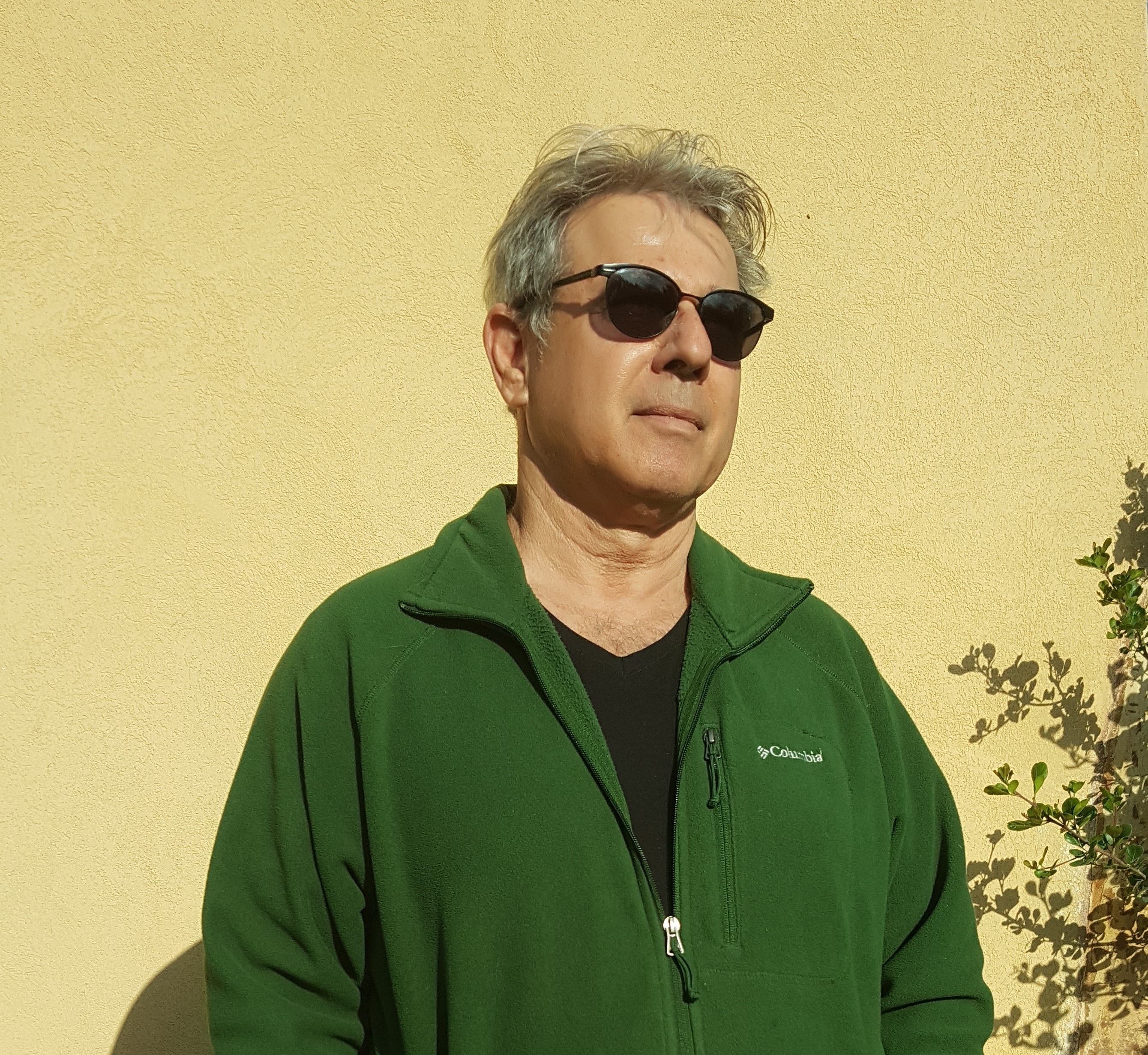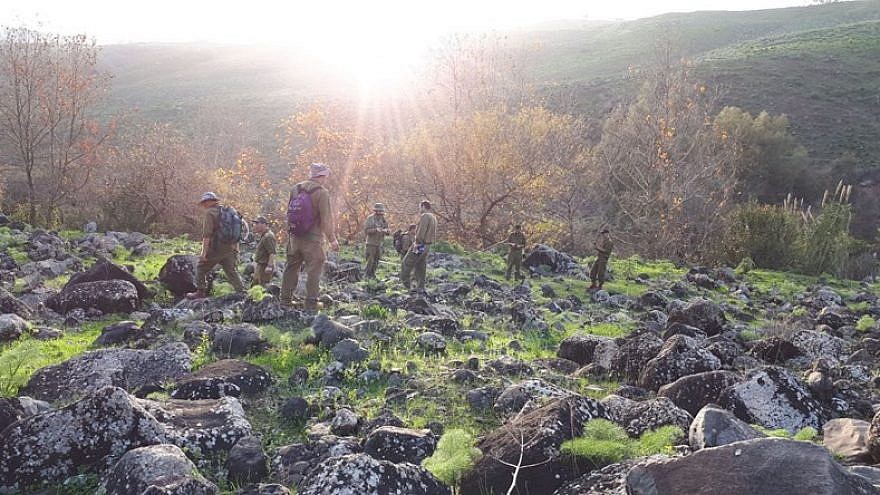Four decades after they vanished without trace in the battles of Israel’s War of Independence, Maj. (res.) Sharon Maayan, a researcher in the Israel Defense Forces Missing Soldier Unit, helped find the remains of modern Israel’s first soldiers.
The 62-year-old father of three, from Moshav Tzafririm in central Israel, told JNS about his extraordinary 29 years of service in the IDF, which saw him use new methods and recreate old battles to track down the remains of missing soldiers.
Maayan began his service as an air-force cadet before continuing on to the Golani infantry brigade and 12 years of reserve service. That saw him take part in the 1982 Lebanon War as a member of the reconnaissance company in the Armored Corps.

“After 12 years, I decided I wanted a change. This is part of my personality, to try new things,” he said. As he decided on what to do next, he heard from friends serving in the air force’s missing personnel unit, which was set up in the aftermath of the 1973 Yom Kippur War and its many missing servicemen.
Inspired by that unit’s work, Maayan joined the IDF Southern Command’s Missing Soldiers Unit in 1990, becoming one of its founding members. He got to work figuring out how to investigate the fate of soldiers who appeared to have vanished without a trace.
In these kinds of investigations, researchers must work day and night, under difficult circumstances, he said. Three years later, he received a request to take on a new mission: to track down the burial places of soldiers killed in action.
“A missing soldier is someone who we do not know what happened to,” explained Maayan. Israel has five such soldiers—three of whom went missing in action during the 1982 Battle of Sultan Yacoub in Lebanon, the missing airman Ron Arad and Guy Hever, who was last seen on his army base in the Golan Heights in 1997.
Soldiers whose place of burial is unknown, by contrast, are known to have been killed in combat, but their final resting spot has yet to be traced by the authorities.
In 1995, Maayan began the mammoth detective work of finding the burial places of soldiers killed in the battles waged between the newly formed IDF and Arab forces in Latrun.
He ended up sketching out a map of an area that stretched out over 100 square kilometers, and turned it into a valuable tool that mapped out every single battle, clash and casualty from that time. The battles of Latrun raged from May to July in 1948, in which Israeli forces sought to take the area from the Arab Legion.
After pouring over all previous works on those battles, intelligence sources, military history books and media reports, Maayan was able to cross-reference the data and begin “to reach conclusions,” he said.

He interviewed veterans of those battles, including some who suffered from post-trauma; it wasn’t easy to get them to describe the key relevant sequence of events that Maayan needed to help him in his mission.
But slowly, he began putting together the pieces of the puzzle, “one detail after another,” he said. Over a process of years, he located 12 out of the 13 burial spots of fallen IDF casualties that he had been assigned to finding.
“We are talking about the importance of bringing every casualty—and every Jew [who fell in Israel’s wars] to proper burial in Israel,” Maayan said, describing what motivated him.
An essential aspect of this work involved being in the field, he stressed. “I am very tied to the ground. I went out on the routes that the soldiers traveled on. If I had testimony that described the roofs of a nearby village, I went to the same location. It was Sisyphean work,” he recalled.
He received a big boost from information in the IDF archives, which today are organized by topics. This was not always the case. “In 1948, there was a document that said a certain person was buried in a certain area, and that document could not be seen by anyone. The casualty’s family received notice that their loved one fell and no further details,” said Maayan.
Trying to figure out the unknown
One of the soldiers whose remains he found was Aharon Sasson, who was born in Damascus and who went MIA on June 9, 1948, during a battle in Latrun.
Prior to being drafted to the IDF’s Brigade 7, Sasson sold weapons, and after he vanished in battles, his family was concerned by rumors that security forces had killed him due to false accusations of treachery.
“This was a very difficult stain,” said Maayan.
Maayan retraced what really happened: Sasson took part in an operation called “Bin Nun,” which turned out to be a failed effort to take the police fortress in Latrun. He sustained an injury during the battle, but that did not stop Sasson from returning to the frontline and joining a new unit whose mission was to guard the Burma Road, built by the IDF to bypass Arab armies that had besieged Jerusalem.
During that mission, Sasson’s unit engaged in an intense battle with an Egyptian Muslim Brotherhood unit that reached central Israel. Sasson was mortally wounded, apparently crawling along the road before succumbing to his wounds.
“His body was found and taken for temporary burial in Kibbutz Na’an,” said Maayan. “And from there, it was taken to the Nahalat Yitzhak cemetery [in Givatayim]. But all of this was unknown. His family did not know.”
After Maayan completed his investigation, Sasson’s family was able to reach closure.
“Every name is a whole world. Every casualty is someone who left behind a family,” he stressed.
Trying new ways to find answers
The IDF’s Missing Soldiers Unit is also active when it comes to more recent wars, such as the 2014 conflict with Hamas in Gaza.
“This is a painful and open case,” Maayan said, adding that he could not go into details at this time. “I dealt with taking testimony from the survivors of the attack on the Golani brigade armored personnel carrier,” he said, referring to the incident that killed seven soldiers and resulted in the seizing of the body of Oron Shaul by Hamas.
Maayan, who continues to volunteer for service, said he is passing on his experience to others.
“We know how to work by the book. But our big advantage lies in our personal abilities, and how we work with one another. I go with my intuition, and the field speaks to me. I know how to look and listen. Other members of the unit are lawyers by training, which enables them to take on complex writing and engage in dialogue that is borderline legal. There are archeologists who know how to dig, and Nature Authority employees who can read the field and the map,” he stated.
Ultimately, he said, what helped him solve so many cases is looking for solutions outside of the box, and to try new, unusual ways to find answers.


























